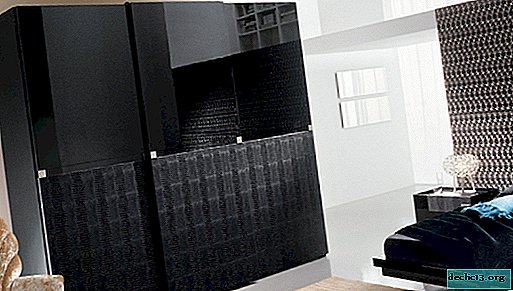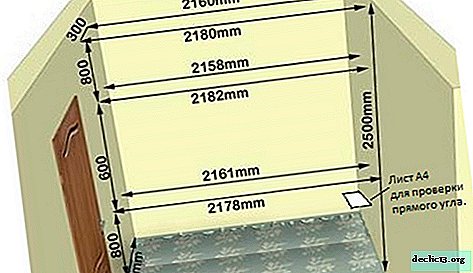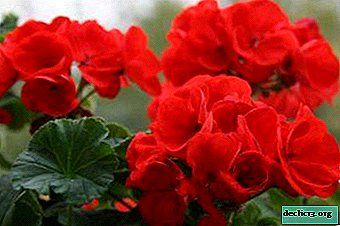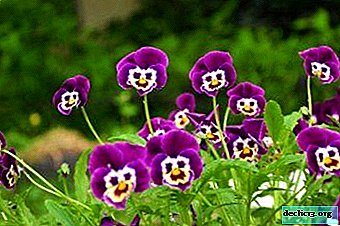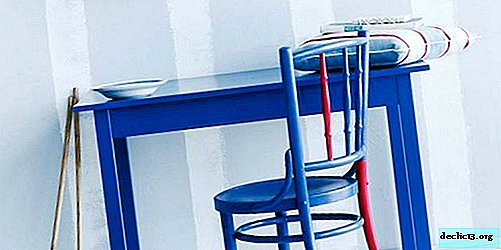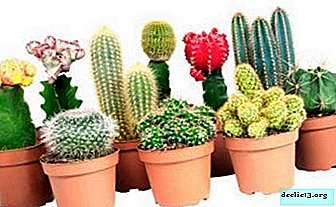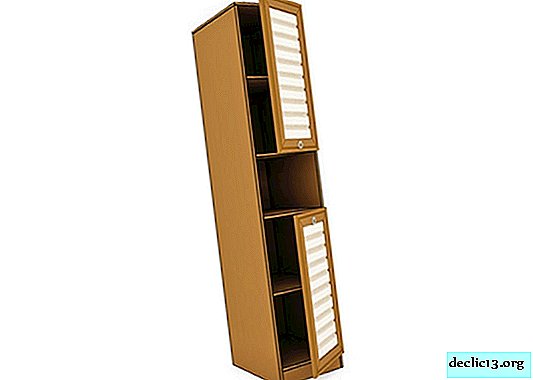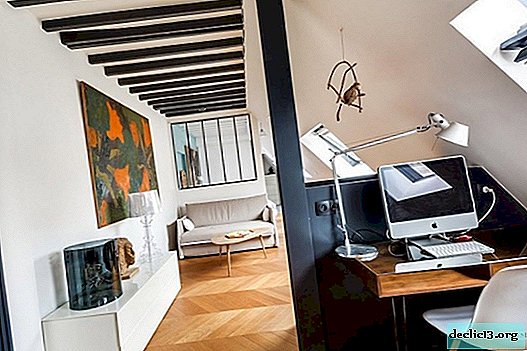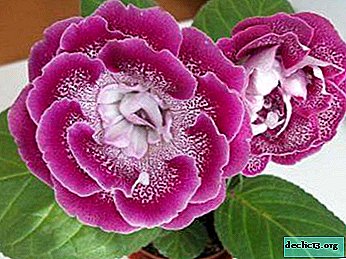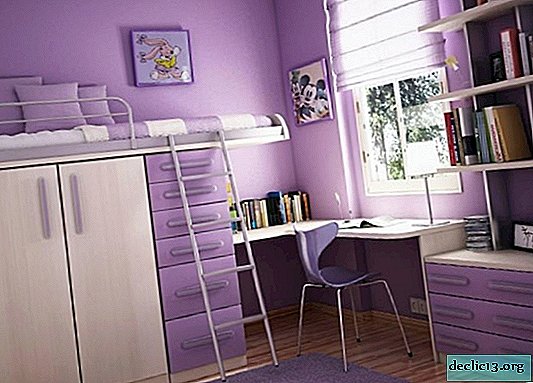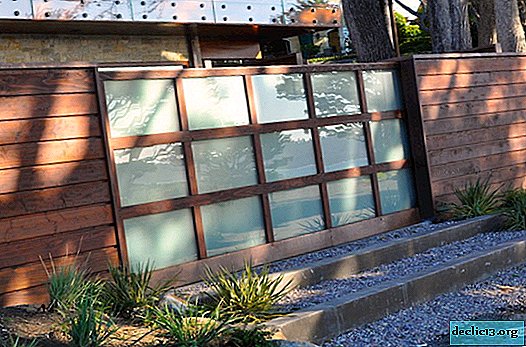What is zonal pelargonium, what varieties exist, what is necessary for growing care?
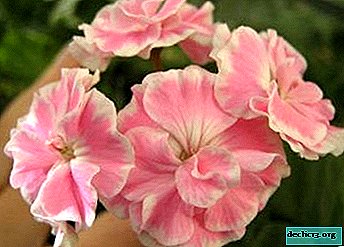
You do not know how and with what to decorate a window sill so that it looks like a small but cozy greenhouse? Pelargonium, a flower that can cheer you up with its appearance and long flowering, can easily help you with this. But like any flower, this beauty requires some care and compliance with the correct conditions of detention.
In this article we will tell you in detail how to grow this beautiful flower and how to properly care for it. Also watch a useful video on this topic.
What it is?
Unpretentious pelargonium was brought to us from South Africa in the 17th century. and since then, more than one window sill has been adorned. Surprisingly, by the 19th century, the variety of cultivars of this flower was amazing. In scale, the plant can be both miniature and medium-tall, and tall.
ATTENTION: Miniature pelargoniums reach a height of not more than 11-12 cm. The size of the medium-sized varies from 30 cm to 50 cm. Tall ones reach 90 cm.There is a diverse number of layers of petals in pelargonium:
- terry;
- semi-double;
- single.
The plant is perennial, but needs to be renewed every 2-3 years. The variety of inflorescences in pelargonium is surprising. There are bouquet, tulip, clove - for every taste and color.
The price of zone pelargonium is quite acceptable - from 50 to 200 rubles.
Appearance and features
The elongated fruits of this plant resemble the beak of a stork, the stem is straight, but there are also creeping species. The color of the leaves can be like a juicy green color without a single splash, and small spots, patterns, stains can predominate.
At the same time, the petals have all the diversity of the spectrum, the only thing is that there are no saturated yellow and blue geraniums. There are "bird eggs" - the color of the flower in the form of uneven spots of dark color and "speckled flowers", where the petals have patterns in the form of stripes and specks.
Pelargonium is called precisely zonal precisely because it has a certain zone or border, usually painted in a different color. This is a lush bush, strewn with beautiful buds.
The plant is quite unique and has a number of features:
- it is quite unpretentious;
- caring for him is simple and understandable to everyone;
- the aroma emanating from the flowers is pleasant and fragrant;
- Another feature that pelargonium possesses is that its flowers are used both in perfumery and in medicine.
Varieties: description and photo
How different varieties of plants look like, you can look at these photos, on separate pictures you can look at how flower care is carried out at home.
"Chandelier Scarlet"

It is one of the common types of pelargonium. Perennial plants are usually grown in apartments. "Chandelier Scarlet" has a fairly large flowers juicy red colorand their diameter does not exceed 2.5 cm.
Tuscany

A dwarf plant with snow-white flowers. Inflorescences in some way resemble caps, the bush itself with dark green foliage is round, spherical.
Terry

Terry pelargonium has an unusual shape of petals, thanks to which the plant looks quite magnificent. These flowers are somewhat reminiscent of soft pompons. Petals can be pink, raspberry, red or coral.
Growing Tips
- Since the plant is native to Africa, for abundant flowering, it needs bright light 15-16 hours a day. Both the western and eastern sides of the house with a window will do. The light should be bright, diffused. Protect the flower from burns.
- The seeds of this plant are usually sown in fairly loose soil. Such soil consists of turf soil, peat and sand in a ratio of 2: 1: 1. This mixture does not need to be overfilled with nutrients, as this will only harm the seeds. Also, do not forget about disinfection of the soil, for example, it can be heated in the oven at a sufficiently high temperature.
- After the seedlings began to emerge, it is necessary to loosen the soil periodically. Our soil must be moistened, but do not overdo it. The future plant should be put on a window, well lit by the rays of the sun, and maintain a moderate temperature.
- With the first leaves, seedlings must be dived into small pots. After this, the plants should be stored at a temperature of 17-20 degrees.
Care Tips
Pelargonium care is quite simple and does not require much effort.. Being born in hot Africa, she is photophilous. With good lighting, pelargonium forms lateral shoots, quite strong, and a colored belt appears on the leaves. When caring for a flower in winter, the temperature should be 14 degrees. In summer, the temperature varies from 25 to 30 degrees.
In order to get a truly magnificent and beautiful bush, pelargonium is cut annually. Water the plant every three to four days. In winter, you should water the flower so that it does not dry out. Excess or lack of moisture causes yellowing or, in the worst case, leaf fall. Redness of their tips may be associated with low temperatures. If the leaves still begin to fall, it is necessary to get rid of them in a timely manner, otherwise this will lead to fungal infections.
Common Diseases and Pests
Most plants are quite sensitive and easily vulnerable.. They have the risk of contracting quite serious and terrible diseases. And pelargonium is no exception.
She is quite sensitive and vulnerable to diseases such as:
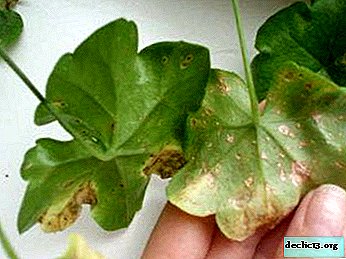 edema, in which the leaves of the plant mutate;
edema, in which the leaves of the plant mutate;- flower mold;
- blackleg;
- fungal infections;
- mold.
Do not forget about insects, from which innocent flowers are tormented. Such a pest as whitefly is very dangerous for zonal pelargonium. Also dangerous insects are spider mites, mealybugs and aphids.
If gray rot forms on the pelargonium, this means that the flower does not tolerate stagnation of water. If the leaves of this plant look bloated, this means that there is an excess of moisture in the soil.
Seed propagation
Pelargonium has sufficiently large seeds. The best growing period is from November to April, although sowing can be done at any time of the year. It is important to know that when grown from seeds, geranium can lose varietal traits.
- Of particular importance for pelargonium is soft, loose and water-intensive soil. In order to get it, you need to mix turf soil, peat, sand in a ratio of 2: 1: 1.
- Then you need to disinfect the soil.
- Seeds should be planted in wet soil. The main thing is not to go too far with water, since geraniums do not like excess moisture.
- Seeds are placed in the soil to a depth of 1 cm.
- The temperature should be around 22 degrees.
- Before the first seedlings appear, pelargonium must be covered with a film or placed behind glass.
- A prerequisite for growing is airing the greenhouse and moistening the soil.
- After the appearance of valid leaves, the film is removed and the future plant is moved to the pots.
Useful video
Watch a video about growing zonal pelargonium from seeds:
Conclusion
Pelargonium is a truly stunning flower that not only serves as a magnificent decoration in the room, but also helps to calm down and uplift. For example, the aroma that it emits has a beneficial effect on the human nervous system, thereby relaxing it.
And the price of pelargonium is quite acceptable, so this is exactly the plant that should be kept in the room. This is what zonal pelargonium means.

 edema, in which the leaves of the plant mutate;
edema, in which the leaves of the plant mutate;

